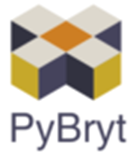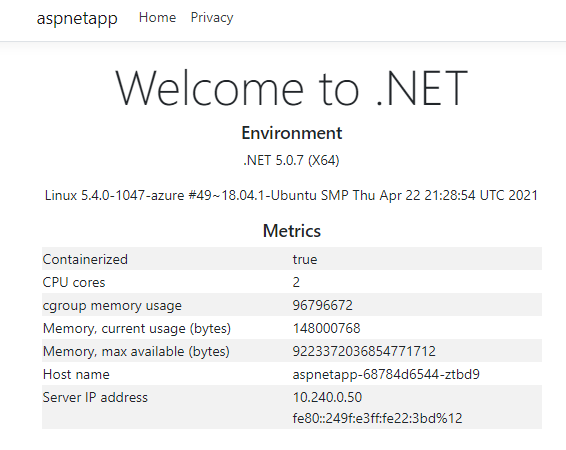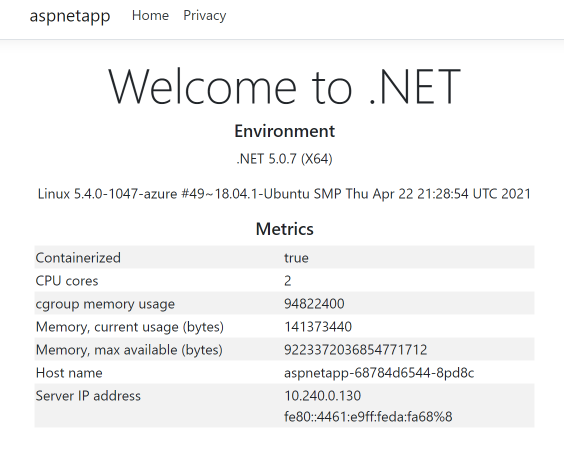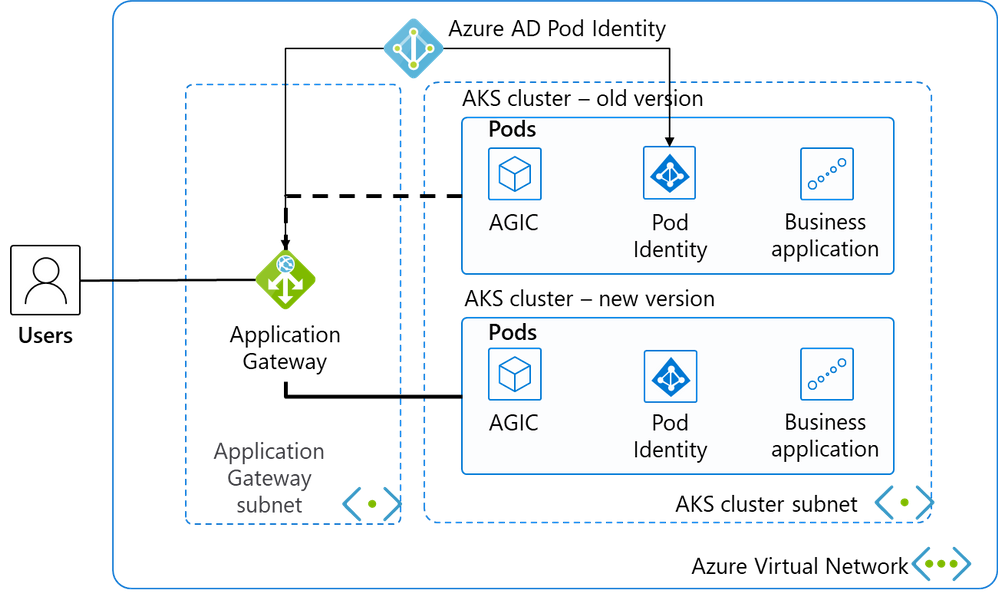
by Contributed | Jul 8, 2021 | Technology
This article is contributed. See the original author and article here.
COVID-19 has a created an inflection point that is accelerating the use of AI in healthcare. More data was created in the last two years than in the previous 5,000 years of humanity. Alongside this trend, we see an acceleration of decision support applications that are based on extracting clinical insights and analytics from data. AI and Machine Learning play an important role in our ability to understand big data and learn from it.
Today we are announcing Text Analytics for Health as generally available with Text Analytics in Azure Cognitive Services. The service allows developers to process and extract insights from unstructured biomedical text, including various types of clinical notes, medical publications, electronic health records, clinical trial protocols, and more, expediting the ability to learn from this data and leverage it for secondary use.
The service has been in preview since July 2020 supports enhanced information extraction capabilities, as follows:
- Identifying medical concepts in text, determining boundaries and classification into domain-specific entities. Concepts include Diagnosis, Symptoms, Examination, Medications, and more. Recent additions to the GA service include expanding the Genomics category to enable extracting mutation types and expression in addition to identifying genes and variants. The current version of the service we are releasing as generally available contains 31 different entity types, and we will be increasing this in the future.

- Associating medical entities with common ontology concepts from standard clinical coding systems, such as UMLS, SNOMED-CT, ICD9 and 10 etc.

- Identifying and extracting semantic relationships and dependencies between different entities to provide deeper understanding of the text, like Dosage of Medication or Variant or Gene. Recent additions made to the service toward its general availability include expanding the types of relationships, and the service now supports 35 different types.

- Assertion detection, to support better understanding of the context in which the entity appears in the text. The Assertions help you detect whether an entity appears in negated form, as possible, likely, unlikely (for example, “patients with possible NHL”)
- Whether the mention is conditional, or mentioned in a hypothetical way (for example, “if patient has rashes (hypothetical), prescribe Solumedrol (conditional)”, or whether something is mentioned in the context of someone else (for example, “patient’s mother had history of breast cancer” does not mean the patient has breast cancer).

The service can be used synchronously and asynchronously and is available in most Azure regions, currently in English. The service can be used via a hosted endpoint or by downloading a container, to meet your specific security and data governance requirements. Either way, the service does not store the data it processes and is covered under the Azure compliance .
During the last year, the service was available under a gated preview program. With today’s announcement on general availability, we are removing the gating off the service.
Get started today,
Review Text Analytics for health documentation
Learn more about Microsoft Cloud for Healthcare

by Contributed | Jul 8, 2021 | Technology
This article is contributed. See the original author and article here.
We need you to help us level the playing field in higher education


We are a MSc student consulting team from Imperial College Business School London working on a project for Microsoft’s Open Sourced auto-assessment Python Library, PyBryt.
We consist of 5 team members, Yaw Kusi Arthur, Rohit Kumar Lalwani, Karlan Cortese, Milan Patel, Stepan Cherkasov and we’re interested in learning about educators in higher education’s perspective on auto-assessment tools. With your help, we aim to gain insights that would better PyBryt and, in the process, level the playfield of education!
PyBryt is a free, Open-Source auto-assessment Python library for teaching and learning that offers meaningful feedback to learners, analysis of complexity within learner solutions, plagiarism detection and easy integration into existing organizational infrastructure.
Find out more about PyBryt here With you help we can empower you as an educator. Click on the survey above now!
Click below to access the survey:
Educator Survey (5min)
by Scott Muniz | Jul 8, 2021 | Security, Technology
This article is contributed. See the original author and article here.
Cisco has released security updates to address vulnerabilities in multiple Cisco products. An attacker could exploit some of these vulnerabilities to take control of an affected system. For updates addressing lower severity vulnerabilities, see the Cisco Security Advisories page.
CISA encourages users and administrators to review the following Cisco advisories and apply the necessary updates:

by Contributed | Jul 8, 2021 | Technology
This article is contributed. See the original author and article here.
Application deployment
Let’s deploy a demo app to verify that the app gateway and the AKS cluster have been successfully integrated.
kubectl apply -f deployment_aspnet.yaml
Let’s deploy the application.
kubectl get po -o wide
NAME READY STATUS RESTARTS AGE IP NODE NOMINATED NODE READINESS GATES
aad-pod-identity-mic-787c5958fd-kmx9b 1/1 Running 0 177m 10.240.0.33 aks-nodepool1-94448771-vmss000000 <none> <none>
aad-pod-identity-mic-787c5958fd-nkpv4 1/1 Running 0 177m 10.240.0.63 aks-nodepool1-94448771-vmss000001 <none> <none>
aad-pod-identity-nmi-mhp86 1/1 Running 0 177m 10.240.0.4 aks-nodepool1-94448771-vmss000000 <none> <none>
aad-pod-identity-nmi-sjpvw 1/1 Running 0 177m 10.240.0.35 aks-nodepool1-94448771-vmss000001 <none> <none>
aad-pod-identity-nmi-xnfxh 1/1 Running 0 177m 10.240.0.66 aks-nodepool1-94448771-vmss000002 <none> <none>
agic-ingress-azure-84967fc5b6-cqcn4 1/1 Running 0 111m 10.240.0.79 aks-nodepool1-94448771-vmss000002 <none> <none>
aspnetapp-68784d6544-j99qg 1/1 Running 0 96 10.240.0.75 aks-nodepool1-94448771-vmss000002 <none> <none>
aspnetapp-68784d6544-v9449 1/1 Running 0 96 10.240.0.13 aks-nodepool1-94448771-vmss000000 <none> <none>
aspnetapp-68784d6544-ztbd9 1/1 Running 0 96 10.240.0.50 aks-nodepool1-94448771-vmss000001 <none> <none>
We can see that the pods of the app are working correctly. Note that their IPs are 10.240.0.13, 10.240.0.50, and 10.240.0.75.
The app gateway backend can be seen as the IP above.
az network application-gateway show-backend-health
-g $RESOURCE_GROUP
-n $APP_GATEWAY
--query backendAddressPools[].backendHttpSettingsCollection[].servers[][address,health]
[
[
"10.240.0.13",
"Healthy"
],
[
"10.240.0.50",
"Healthy"
],
[
"10.240.0.75",
"Healthy"
]
]
Check the I P address on the front end.
az network public-ip show -g $RESOURCE_GROUP -n $APPGW_IP --query ipAddress -o tsv
Then access this IP with a browser and you’ll see it.

Refresh a few more times, and Host name and Server IP address display 3 host names and IPs in turns, which are the 3 pod names and intranet IPs of the pods we deployed earlier. This shows that pods integration in the application gateway and AKS has been successfully implemented.
Deploy a new cluster of AKS
Create a new version of the AKS cluster
Let’s create a new AKS clusters in the subnet where the existing AKS is located. Our previous version of AKS uses the current default version of1.19.11. The new AKS cluster uses 1.20.7, and all the other parameters remain unchanged.
AKS_NEW=new
az aks create -n $AKS_NEW
-g $RESOURCE_GROUP
-l $AZ_REGION
--generate-ssh-keys
--network-plugin azure
--enable-managed-identity
--vnet-subnet-id $AKS_SUBNET_ID
--kubernetes-version 1.20.7
We also installs application-gateway-kubernetes-ingress in the new AKS cluster with Helm.
Install Pod Identify in the new version of the AKS cluster
Connect to the AKS cluster.
az aks get-credentials --resource-group $RESOURCE_GROUP --name $AKS_NEW
Install AAD Pod Identify
kubectl create serviceaccount --namespace kube-system tiller-sa
kubectl create clusterrolebinding tiller-cluster-rule --clusterrole=cluster-admin --serviceaccount=kube-system:tiller-sa
helm repo add aad-pod-identity https://raw.githubusercontent.com/Azure/aad-pod-identity/master/charts
helm install aad-pod-identity aad-pod-identity/aad-pod-identity
Install Application Gateway Ingress Controller with helm.
helm repo add application-gateway-kubernetes-ingress https://appgwingress.blob.core.windows.net/ingress-azure-helm-package/
helm repo update
Deploy apps on the new version of the AKS cluster
We install the same app in the new AKS cluster.
kubectl apply -f deployment_aspnet.yaml
Once the app is deployed, list Pod.
kubectl get po -o=custom-columns=NAME:.metadata.name,
podIP:.status.podIP,NODE:.spec.nodeName,
READY-true:.status.containerStatuses[*].ready
NAME podIP NODE READY-true
aad-pod-identity-mic-787c5958fd-flzgv 10.240.0.189 aks-nodepool1-20247409-vmss000002 true
aad-pod-identity-mic-787c5958fd-rv2ql 10.240.0.103 aks-nodepool1-20247409-vmss000000 true
aad-pod-identity-nmi-79sz7 10.240.0.159 aks-nodepool1-20247409-vmss000002 true
aad-pod-identity-nmi-8wjnj 10.240.0.97 aks-nodepool1-20247409-vmss000000 true
aad-pod-identity-nmi-qnrh9 10.240.0.128 aks-nodepool1-20247409-vmss000001 true
aspnetapp-68784d6544-8pd8c 10.240.0.130 aks-nodepool1-20247409-vmss000001 true
aspnetapp-68784d6544-8r2hr 10.240.0.172 aks-nodepool1-20247409-vmss000002 true
aspnetapp-68784d6544-9ftvm 10.240.0.107 aks-nodepool1-20247409-vmss000000 true
In the actual production operations process, after deploying a good app, we do not associate to the existing application gateway directly. Instead, we remotely log on and test through private network access.
kubectl run -it --rm aks-ssh --image=mcr.microsoft.com/aks/fundamental/base-ubuntu:v0.0.11
Once the container is started, it goes straight into the container, and we visit the three intranet IPs mentioned above –10.240.0.107, 10.240.0.130, 10.240.0.172. For example,
root@aks-ssh:/# curl http://10.240.0.107
root@aks-ssh:/# curl http://10.240.0.130
root@aks-ssh:/# curl http://10.240.0.172
We see that all can return content normally. This can used to simulate the new environment has been tested and passed, and finally the new AKS cluster is associated with the existing application gateway.
Switching the app gateway to integrate with the new version of AKS
Install the AGIC with the following command.
helm install agic application-gateway-kubernetes-ingress/ingress-azure -f helm_agic.yaml
Wait a few seconds
kubectl get po -o=custom-columns=NAME:. metadata.name,podIP:.status.podIP,NODE:.spec.nodeName,READY-true:.status.containerStatuses[*].ready
NAME podIP NODE READY-true
aad-pod-identity-mic-787c5958fd-flzgv 10.240.0.189 aks-nodepool1-20247409-vmss000002 true
aad-pod-identity-mic-787c5958fd-rv2ql 10.240.0.103 aks-nodepool1-20247409-vmss000000 true
aad-pod-identity-nmi-79sz7 10.240.0.159 aks-nodepool1-20247409-vmss000002 true
aad-pod-identity-nmi-8wjnj 10.240.0.97 aks-nodepool1-20247409-vmss000000 true
aad-pod-identity-nmi-qnrh9 10.240.0.128 aks-nodepool1-20247409-vmss000001 true
agic-ingress-azure-84967fc5b6-9rvzn 10.240.0.152 aks-nodepool1-20247409-vmss000001 true
aspnetapp-68784d6544-8pd8c 10.240.0.130 aks-nodepool1-20247409-vmss000001 true
aspnetapp-68784d6544-8r2hr 10.240.0.172 aks-nodepool1-20247409-vmss000002 true
aspnetapp-68784d6544-9ftvm 10.240.0.107 aks-nodepool1-20247409-vmss000000 true
We can see that the pod for agic-ingress-azure-*** is up and running.
First look at the back end of the app gateway from the command line and it’s updated to the new pods.
az network application-gateway show-backend-health
-g $RESOURCE_GROUP
-n $APP_GATEWAY
--query backendAddressPools[].backendHttpSettingsCollection[].servers[][address,health]
[
[
"10.240.0.107",
"Healthy"
],
[
"10.240.0.130",
"Healthy"
],
[
"10.240.0.172",
"Healthy"
]
]
Let’s go back to the browser to refresh the public network IP of the app gateway and see that the Host name and IP display have switched to the new backend.

If the new AKS cluster fails, we can switch back to the old AKS cluster. Just connect to the old AKS cluster first.
az aks get-credentials --resource-group $RESOURCE_GROUP --name $AKS_OLD
Run the commands to install AGIC again.
helm uninstall agic
helm install agic application-gateway-kubernetes-ingress/ingress-azure -f helm_agic.yaml
We can see that the pod for AGIC is already running.
kubectl get po -o wide
NAME READY STATUS RESTARTS AGE IP NODE NOMINATED NODE READINESS GATES
aad-pod-identity-mic-787c5958fd-kmx9b 1/1 Running 0 2d1h 10.240.0.33 aks-nodepool1-94448771-vmss000000 <none> <none>
aad-pod-identity-mic-787c5958fd-nkpv4 1/1 Running 1 2d1h 10.240.0.63 aks-nodepool1-94448771-vmss000001 <none> <none>
aad-pod-identity-nmi-mhp86 1/1 Running 0 2d1h 10.240.0.4 aks-nodepool1-94448771-vmss000000 <none> <none>
aad-pod-identity-nmi-sjpvw 1/1 Running 0 2d1h 10.240.0.35 aks-nodepool1-94448771-vmss000001 <none> <none>
aad-pod-identity-nmi-xnfxh 1/1 Running 0 2d1h 10.240.0.66 aks-nodepool1-94448771-vmss000002 <none> <none>
agic-ingress-azure-84967fc5b6-nwbh4 1/1 Running 0 8s 10.240.0.70 aks-nodepool1-94448771-vmss000002 <none> <none>
aspnetapp-68784d6544-j99qg 1/1 Running 0 2d 10.240.0.75 aks-nodepool1-94448771-vmss000002 <none> <none>
aspnetapp-68784d6544-v9449 1/1 Running 0 2d 10.240.0.13 aks-nodepool1-94448771-vmss000000 <none> <none>
aspnetapp-68784d6544-ztbd9 1/1 Running 0 2d 10.240.0.50 aks-nodepool1-94448771-vmss000001 <none> <none>
Then look at the app gateway backend
az network application-gateway show-backend-health
-g $RESOURCE_GROUP
-n $APP_GATEWAY
--query backendAddressPools[].backendHttpSettingsCollection[].servers[][address,health]
[
[
"10.240.0.13",
"Healthy"
],
[
"10.240.0.50",
"Healthy"
],
[
"10.240.0.75",
"Healthy"
]
]
We can see that the same app gateway backend has been restored to the IPs of the old AKS cluster.
During the process to uninstall and reinstall the AGIC, neither the app gateway nor the app’s pods are being operated. Therefore, there is not any interruption to front-end access. With this, it is possible to finally implement the old and new AKS clusters that are retained at the same time and can be switched in real time.
summary
The above is an example of a common Web application that demonstrates a new AKS cluster can be securely upgraded with a blue-green deployment. In addition to Web apps, applications of all types and scenarios can be referenced to switch between AKS clusters and upstream integrations for real-time switching and rollback.

by Contributed | Jul 8, 2021 | Technology
This article is contributed. See the original author and article here.
Azure Kubernetes Services (AKS) is a managed Kubernetes service on Microsoft Cloud Azure that can be used to rapidly deploy Kubernetes clusters, integrate with other Azure services and features to achieve simple operations and elastic business applications. The Kubernetes community is booming, and version upgrades are frequent. AKS manages version upgrade so that AKS clusters can be upgraded at the click of a button, rolling through the working nodes within a cluster. This makes it easy to upgrade AKS for small or non-mission-critical clusters. However, the in-place upgrade method is not very suitable for large-scale clusters or mission-critical applications, because it has a long overall upgrade time and the possibility of upgrade failure. And the failure cannot be rolled back. The safest approach is to create a new AKS cluster, switch upgrades using blue-green deployments. This approach can switch in seconds, and roll back the backup cluster at any time, which is faster and safer. Correspondingly, the architecture and operation of this approach is more complex. This article leads you to gradually build such an architecture scheme. This time we’re using a scenario for a classic Web application, which can be expanded into other scenarios.
Architecture overview

This is a classic Web application architecture diagram, and we’ve selected the most streamlined resources to keep the demonstration and instructions as concise as possible.
Place 2 subnets in a virtual network, and place the application gateway in the first subnet as a load balancer for external services.
The second subnet has only 1 AKS cluster daily and deploys the business system. The AKS cluster uses advanced network CNI to simplify network patterns and facilitate application gateway communication with them.
Deploy Pod Identity is deployed in the AKS cluster to authorize pods in AKS to manage the application gateway through Azure AD’s Pod Identity.
AGIC, known as Application Gateway Ingress Controller, not only distributes network traffic from the app gateway to the appropriate Pod, but also monitors changes in some Kubernetes resources, automatically updates the back-end pool of the app gateway as AKS scales, and updates the back-end pool of the app gateway synchronously as the AKS cluster switches. The core idea for our blue-green deployment is dynamically updating the back end of the app gateway with AGIC.
Resources Deployment
Basic resources such as the network
We quickly create the underlying resources of the current environment with CLI. Resource group:
AZ_REGION=ChinaNorth2
RESOURCE_GROUP=AKS_Upgrade
az group create -n $RESOURCE_GROUP -l $AZ_REGION
Create VNET and subnets.
VNET_NAME=AksVnet
APPGW_SUBNET=AppGwSubnet
AKS_SUBNET=AksSubnet
network vnet create on $VNET_NAME
-g $RESOURCE_GROUP
-l $AZ_REGION
--address-prefix 10.0.0.0/8
--subnet-name $APPGW_SUBNET --subnet-prefix 10.1.0.0/16
az network vnet subnet create
-g $RESOURCE_GROUP
-n $AKS_SUBNET
--address-prefixes 10.240.0.0/16
--vnet-name $VNET_NAME
The current AKS cluster
Create a public IP.
APPGW_IP=AppGatewayIp
az network public-ip create -n $APPGW_IP
-g $RESOURCE_GROUP
--allocation-method Static
--sku Standard
Create an app gateway.
APP_GATEWAY=AppGateway
az network application-gateway create -n $APP_GATEWAY
-g $RESOURCE_GROUP
-l $AZ_REGION
--vnet-name $VNET_NAME
--subnet $APPGW_SUBNET
--sku Standard_v2
--public-ip-address $APPGW_IP
Create an old AKS cluster with the current default mainstream AKS version. Get the subnet ID of the AKS cluster we created earlier.
AKS_SUBNET_ID=$(az network vnet subnet show -g $RESOURCE_GROUP --vnet-name $VNET_NAME --name $AKS_SUBNET --query id -o tsv)
Create the old AKS cluster.
AKS_OLD=old
az aks create -n $AKS_OLD
-g $RESOURCE_GROUP
-l $AZ_REGION
--generate-ssh-keys
--network-plugin azure
--enable-managed-identity
--vnet-subnet-id $AKS_SUBNET_ID
At the time of writing, the mainstream AKS version is 1.19.11.
The app gateway integrates with the current version of AKS
We use the Azure service principal to authorize the AKS cluster to manage the configuration of the application gateway.
Connect to the AKS cluster
az aks get-credentials --resource-group $RESOURCE_GROUP --name $AKS_OLD
We can then manage the AKS cluster with the familiar kubectl.
Install Helm and run the following command to add the application-gateway-kubernetes-ingress Helms package. Our AKS cluster has enabled Kubernetes RBAC, so use the following command.
kubectl create serviceaccount --namespace kube-system tiller-sa
kubectl create clusterrolebinding tiller-cluster-rule --clusterrole=cluster-admin --serviceaccount=kube-system:tiller-sa
helm repo add aad-pod-identity https://raw.githubusercontent.com/Azure/aad-pod-identity/master/charts
helm install aad-pod-identity aad-pod-identity/aad-pod-identity
The command will return:
NAME: aad-pod-identity
LAST DEPLOYED: Tue Jun 29 08:14:30 2021
NAMESPACE: default
STATUS: deployed
REVISION: 1
TEST SUITE: None
NOTES:
You have successfully installed AAD Pod Identity in your Kubernetes cluster!
…
Wait a minute or two and use
kubectl get po -o wide
NAME READY STATUS RESTARTS AGE IP NODE NOMINATED NODE READINESS GATES
aad-pod-identity-mic-787c5958fd-kmx9b 1/1 Running 0 71s 10.240.0.33 aks-nodepool1-94448771-vmss000000 <none> <none>
aad-pod-identity-mic-787c5958fd-nkpv4 1/1 Running 0 72s 10.240.0.63 aks-nodepool1-94448771-vmss000001 <none> <none>
aad-pod-identity-nmi-mhp86 1/1 Running 0 72s 10.240.0.4 aks-nodepool1-94448771-vmss000000 <none> <none>
aad-pod-identity-nmi-sjpvw 1/1 Running 0 72s 10.240.0.35 aks-nodepool1-94448771-vmss000001 <none> <none>
aad-pod-identity-nmi-xnfxh 1/1 Running 0 72s 10.240.0.66 aks-nodepool1-94448771-vmss000002 <none> <none>
See that several of the related pods are already running.
Install Application Gateway Ingress Controller with helm.
helm repo add application-gateway-kubernetes-ingress https://appgwingress.blob.core.windows.net/ingress-azure-helm-package/
helm repo update
Copy the following YAML file and save it as helm_agic.yaml to configure AGIC.
# This file contains the essential configs for the ingress controller helm chart
# Verbosity level of the App Gateway Ingress Controller
verbosityLevel: 3
# Specify which application gateway the ingress controller will manage
#
appgw:
subscriptionId: <subscriptionId>
resourceGroup: <resourceGroupName>
name: <applicationGatewayName>
environment: AzureChinaCloud
# Setting appgw.shared to "true" will create an AzureIngressProhibitedTarget CRD.
# This prohibits AGIC from applying config for any host/path.
# Use "kubectl get AzureIngressProhibitedTargets" to view and change this.
shared: false
# Specify which kubernetes namespace the ingress controller will watch
# Default value is "default"
# Leaving this variable out or setting it to blank or empty string would
# result in Ingress Controller observing all acessible namespaces.
#
# kubernetes:
# watchNamespace: <namespace>
# Specify the authentication with Azure Resource Manager
#
# Two authentication methods are available:
# - Option 1: AAD-Pod-Identity (https://github.com/Azure/aad-pod-identity)
# armAuth:
# type: aadPodIdentity
# identityResourceID: <identityResourceId>
# identityClientID: <identityClientId>
## Alternatively you can use Service Principal credentials
armAuth:
type: servicePrincipal
secretJSON: <<Generate value with: "az ad sp create-for-rbac --sdk-auth | base64 -w0">>
# Specify if the cluster is RBAC enabled or not
rbac:
enabled: true # true/false
Let’s fill in the parameter values in the above profiles one by one.
<subscriptionId>
Use command az account show –query id -o tsv to get.
<resourceGroupName>
Use the value of $RESOURCE_GROUP environment variable.
<applicationGatewayName>
Use the value of $APP_GATEWAY environment variable.
The value of secretJSON is obtained using the az ad sp create-for-rbac–sdk-auth | base64 -w0 command, which is a long string of more than 800 bytes encoded by base64.
Because our AKS cluster has RBAC enabled, the last configuration rbac is set to true.
Finally, run the following command.
helm install agic application-gateway-kubernetes-ingress/ingress-azure -f helm_agic.yaml
returns
W0629 08:16:47.733467 16087 warnings.go:70] apiextensions.k8s.io/v1beta1 CustomResourceDefinition is deprecated in v1.16+, unavailable in v1.22+; use apiextensions.k8s.io/v1 CustomResourceDefinition
NAME: agic
LAST DEPLOYED: Tue Jun 29 08:16:48 2021
NAMESPACE: default
STATUS: deployed
REVISION: 1
TEST SUITE: None
NOTES:
Thank you for installing ingress-azure:1.4.0.
Your release is named agic.
The controller is deployed in deployment agic-ingress-azure.
Configuration Details:
----------------------
* AzureRM Authentication Method:
- Use AAD-Pod-Identity
* Application Gateway:
- Subscription ID : 3d07553f-f6a8-455f-9de6-876fbcc00bb4
- Resource Group : AKS_Upgrade
- Application Gateway Name : AppGateway
* Kubernetes Ingress Controller:
- Watching All Namespaces
- Verbosity level: 3
And then
kubectl get po -o wide
NAME READY STATUS RESTARTS AGE IP NODE NOMINATED NODE READINESS GATES
aad-pod-identity-mic-787c5958fd-kmx9b 1/1 Running 0 4m54s 10.240.0.33 aks-nodepool1-94448771-vmss000000 <none> <none>
aad-pod-identity-mic-787c5958fd-nkpv4 1/1 Running 0 4m55s 10.240.0.63 aks-nodepool1-94448771-vmss000001 <none> <none>
aad-pod-identity-nmi-mhp86 1/1 Running 0 4m55s 10.240.0.4 aks-nodepool1-94448771-vmss000000 <none> <none>
aad-pod-identity-nmi-sjpvw 1/1 Running 0 4m55s 10.240.0.35 aks-nodepool1-94448771-vmss000001 <none> <none>
aad-pod-identity-nmi-xnfxh 1/1 Running 0 4m55s 10.240.0.66 aks-nodepool1-94448771-vmss000002 <none> <none>
agic-ingress-azure-8d9d85dd9-z8dwh 1/1 Running 0 2m37s 10.240.0.70 aks-nodepool1-94448771-vmss000002 <none> <none>
We can see that the new agic-ingress-azure pod is also working.












Recent Comments